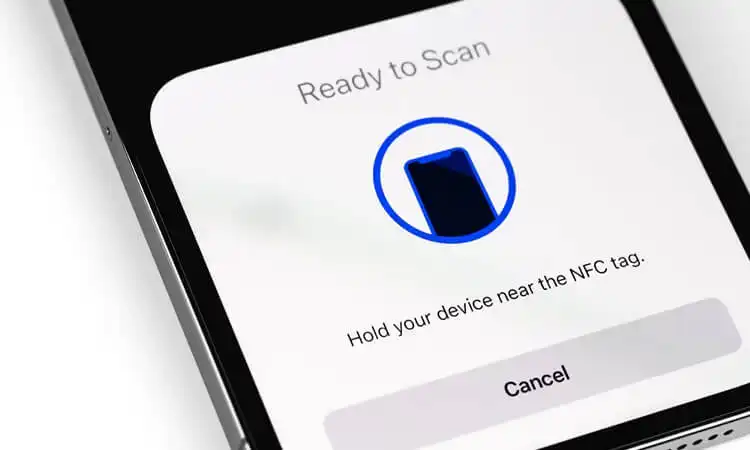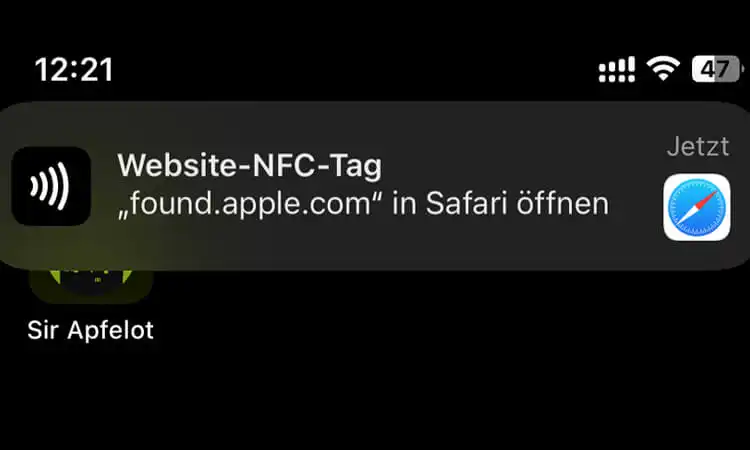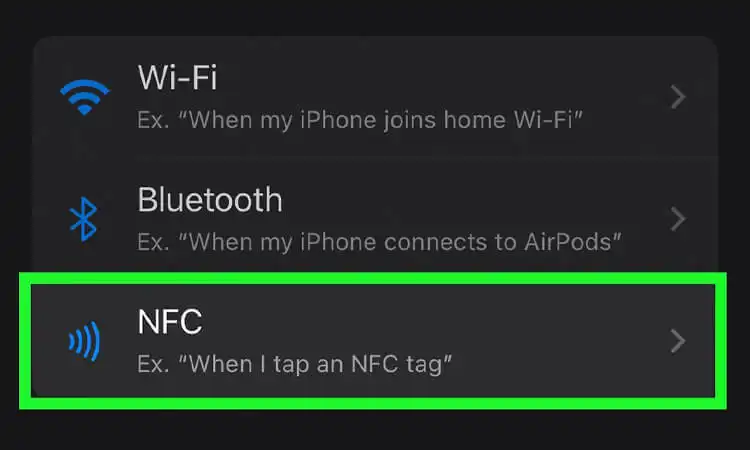NFC (Near Field Communication) technology is becoming more prevalent in modern life due to its convenience and ease of use. With the help of Website NFC tags, businesses can promote their products and engage with their customers in unique and interactive ways. According to recent research, the global NFC market size is expected to reach $47.43 billion by 2027, with a compound annual growth rate of 18.5% from 2020 to 2027. In this blog post, we will explore the basics of NFC tags, how they work, and their significance in the digital world. We’ll also provide some tips and best practices for using NFC tags on websites to maximize their potential for business owners and marketers alike.
Website NFC Tag Explained: Understanding the Basics
Website NFC tags are compact chips incorporating Near Field Communication (NFC) technology. When strategically placed or embedded in physical objects, these tags serve as gateways between the physical and digital worlds. Users can effortlessly access specific website content or initiate actions by simply tapping their NFC-enabled devices on these tags. In essence, Website NFC tags empower websites with seamless connectivity, bridging the gap between offline and online experiences and enhancing user engagement.
Website NFC tags operate through the utilization of Near Field Communication (NFC) technology. When a user taps their NFC-enabled device on a Website NFC tag, it triggers a short-range wireless communication between the tag and the device. The NFC tag emits a radio frequency signal containing encoded information, such as a website URL or specific actions.
Upon detecting the signal, the NFC-enabled device automatically interprets the data and performs the designated action. This action can range from launching the associated website to executing predefined functions like purchasing, displaying exclusive content, or initiating contact with customer support.
The seamless interaction between the NFC tag and the device relies on the close proximity required for NFC communication. This ensures that the process is secure, efficient, and effortless for users, as they can quickly access desired website content or trigger specific actions with a simple tap.
NFC tags are wireless devices that come in various forms, such as stickers, wristbands, keychains, and implantable chips. They can be programmed to contain different data types, such as website URLs, contact information, or payment details. NFC tags have a range of up to 4 inches, meaning the NFC-enabled device needs to be within this range to read the tag. With their versatility and flexibility, NFC tags are used in many applications, such as smart packaging, product authentication, and customer engagement.
You can find some great ideas for using NFC tags here: Using NFC Tags 16 Fun Ways
NFC Tag Detected Explained: What It Means and How It Works
If you’ve ever received a notification on your smartphone that says “NFC tag detected,” you might wonder what it means and how it works. In simple terms, an NFC tag detected notification means that your phone has detected an NFC tag nearby.

NFC tags send a signal to your phone when it comes within range. This signal contains information that can trigger an action on your device, such as opening a website, playing a video, or making a payment.
When your phone detects an NFC tag, it will automatically display a notification that says, “NFC tag detected.” Then, you can choose to either dismiss the notification or tap on it to view the information contained in the tag.
NFC tags are used in a variety of applications, including on websites. They can be used to provide an interactive and engaging experience for users. For example, a website owner could use an NFC tag to provide a virtual tour of a property. It can display product information or provide exclusive offers and discounts to users.
To use NFC tags on your website, you must create and program the tags with the desired information. You can then place the tags on your website as stickers or embed them in images or videos.
Website NFC Tag Meaning: How It Benefits Businesses and Website Owners
NFC tags are increasingly being used on websites to enhance the user experience and provide additional functionality. By adding website to their NFC tags, businesses and website owners can benefit in several ways.

One of the main benefits of Website NFC Tag is the ability to provide quick and easy access to information. For example, a website owner can place an NFC tag on a product page. This tag allows users to quickly access product information and reviews by tapping their smartphone against the tag.
NFC tags can also be used to provide users with exclusive discounts and promotions. By placing an NFC tag on a promotional banner or flyer, businesses can allow users to quickly access the offer by tapping their smartphone against the tag.
Another benefit of Website NFC Tag is tracking user behavior and collecting data. By placing NFC tags on specific pages, businesses can track how often users access those pages and their actions. This data can then be used to optimize the website and improve the user experience.
How to Use a Website NFC Tag: Best Practices and Tips
Using a website NFC tag is a simple and effective way to provide users with quick and easy access to content on your website. Here are some best practices and tips for using website on your NFC tags:
- Choose the right location for your NFC tag. Please place it in a prominent location where users will likely see it.
- Ensure the NFC tag is compatible with your users’ devices. Different devices may require different types of NFC tags.
- Use clear and concise messaging on your NFC tag. Let users know what they can expect to find when they tap their device against the tag.
- Test your NFC tag to ensure it is working properly. Make sure it is linking to the correct content and that it is compatible with different devices.
- Consider using NFC tags to provide users with exclusive content or promotions. This can incentivize users to tap the tag and engage with your website.
- Use NFC tags in conjunction with other marketing materials to provide users with many touchpoints, such as flyers or posters.
By following these best practices and tips, you can ensure that your website NFC tags are effective. These websites’ NFC labels provide users with a seamless and convenient experience.
You can learn how to program NFC tags here: Latest Android and iOS NFC Tags Programming Guide
Integration and Implementation
Integrating Website NFC tags into your website involves a straightforward process. Firstly, you need to determine the appropriate locations or objects where NFC tags will be placed. These can include promotional materials, packaging, business cards, or physical products. Next, NFC tags need to be encoded with the desired website URLs or actions. This can be achieved using NFC encoding software or by working with NFC tag suppliers who offer encoding services. Once the tags are encoded, they can be attached or embedded into the designated locations or objects.
To implement Website NFC tags on your website, you need to ensure that your website is NFC-enabled. This typically involves adding the necessary code or plugins that detect and respond to NFC interactions. There are various NFC libraries and frameworks available for different web development platforms that simplify this integration process.
Once the integration is complete, users can tap their NFC-enabled devices on the designated NFC tags, and the associated website or action will be triggered automatically. Testing and optimizing the NFC tag placement and functionality is important to ensure a seamless user experience.
Why You Get a Website NFC Tag Found Apple.com Notification: Explained
If you’re an iPhone user, you may have received a “Website NFC tag found at apple.com” notification when visiting certain websites. Here’s what it means:
NFC tags can be used to trigger actions on mobile devices, such as opening a specific app or webpage. When a user taps their device against an NFC tag on a website, it can trigger an action on their device.

In the case of the “Website NFC tag found at apple.com” notification, it is likely that the website you visited has implemented an NFC tag designed to work specifically with iPhones.
Apple has implemented its own system for NFC tags, called “NFC background tag reading.” This allows iPhones to automatically detect NFC tags without requiring users to open a specific app or tap their device against it.
So when you visit a website with an NFC tag designed to work with iPhones, your device will automatically detect the tag and trigger the “Website NFC tag found at apple.com” notification.
Stop Website NFC Tag Notifications: Tips and Tricks
While NFC tags can be a useful tool for businesses and website owners, some users may find the constant notifications annoying. If you’re one of these users, here are some tips and tricks for stopping website NFC tag notifications:
- Disable NFC in your device settings. This will prevent your device from reacting to any NFC tags it encounters.
- Turn off “NFC Tag Reading” in your Safari settings. This will disable the ability for websites to trigger NFC tag reactions on your device.
- Disable website NFC tag notifications in your browser settings. Many mobile browsers allow you to turn off notifications for specific websites.
- Use a browser extension that blocks NFC tags. There are several browser extensions available that can prevent your device from detecting and reacting to NFC tags.
- Use an app that blocks NFC tags. Some apps are specifically designed to block NFC tags and prevent them from triggering actions on your device.
- Clear your Safari browsing data to remove any saved NFC tag reactions.
- Be mindful of where you tap your device. If you don’t want to receive NFC tag notifications, be mindful of where you tap your device and avoid tapping it against NFC tags.
It’s important to note that disabling NFC or turning off NFC tag reading may also prevent you from using other NFC-enabled features on your device. However, if you find the constant notifications distracting, these tips can help you take control of your browsing experience and prevent unwanted interruptions.
Website NFC tags provide users with a convenient and interactive experience while browsing the internet on their mobile devices. By understanding the basics, benefits, and best practices for using these tags, users can enjoy a more seamless browsing experience. However, for those who find the notifications disruptive, there are ways to disable or block them. Overall, website NFC tags are an innovative tool to enhance the mobile browsing experience.
Related Articles:
- Does NFC Drain Battery?
- Top 13 NFC Companies
- Which RFID VS NFC is Better and Why?
- NFC Bluetooth Pairing: Your iPhone Or Android Support It?
Common Concerns and FAQs
-
FAQ 1: Can website NFC tags track user data?
NFC tags do not directly track user data. The data collected through website interactions triggered by NFC tags is subject to the website’s privacy policy and data collection practices. It’s essential for website owners to be transparent with users about the data collected and to obtain proper consent when necessary.
-
FAQ 2: How can Businesses Benefit from Using Website NFC Tags?
Businesses can use Website NFC Tags to provide their customers with a seamless and engaging mobile experience. For example, they can use NFC Tags to direct customers to a specific landing page, provide contact information, or offer promotions and discounts.
-
FAQ 3: How do I Create and Implement a Website NFC Tag on My Website?
You will need an NFC Tag and an NFC reader/writer to create and implement a Website NFC Tag on your website. There are many online tutorials and resources available that can guide you through the process.
-
FAQ 4: Are there any Security Concerns Related to Website NFC Tags?
There is a potential for security concerns related to Website NFC Tags. For example, if a malicious party were to create a fake NFC Tag and trick users into tapping their device on it, they could potentially steal personal information. However, these types of attacks are rare.
-
FAQ 5: What Types of Information can be Shared Through a Website NFC Tag?
A Website NFC Tag can share various information, including website links, contact information, product details, etc. The specific information shared will depend on the goals and objectives of the business or website owner.
-
FAQ 6: Can Website NFC Tags be Used for Mobile Payments?
Yes, Website NFC Tags can be used to facilitate mobile payments. By tapping their device against the tag, users can access payment information and complete transactions.
-
FAQ 7: How do I Turn Off Website NFC Tag Notifications on My Mobile Device?
The process for turning off Website NFC Tag notifications will vary depending on your device and operating system. However, most devices allow you to turn off NFC and/or disable NFC Tag notifications in your device settings.
-
FAQ 8: What are Some Common Uses Cases for Website NFC Tags in Marketing?
Some common use cases for Website NFC Tags in marketing include providing product information. It directs customers to a specific landing page and offers promotions and discounts.
-
FAQ 9: How does Website NFC Tag Technology Compare to Other Forms of Mobile Marketing?
Website NFC Tag technology offers businesses a unique and interactive way to engage with their customers. Compared to other forms of mobile marketing, such as SMS or email marketing. NFC technology offers a more immediate and direct way to connect with users.








